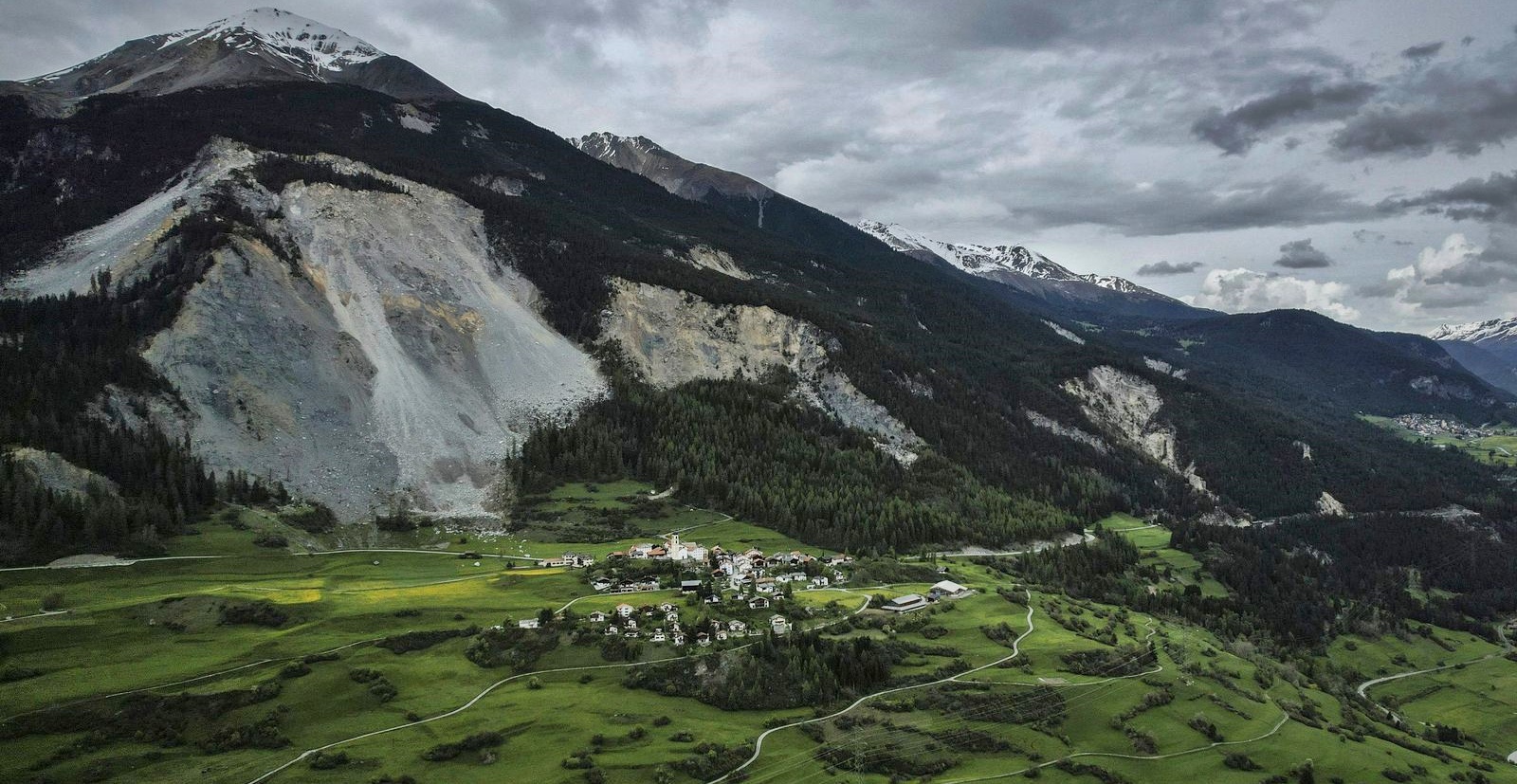Huge rock masses threaten Swiss village
The mountain village of Brienz in Graubünden is in danger of being buried by rubble and rubble, which is why the local people have to relocate this week.

The rock masses have long threatened the village, but now they are moving more than twice as fast. The weather forecast is also worrying.
Huge rock masses threaten the mountain village of Brienz in Switzerland. The situation has deteriorated to such an extent that the 50 or so residents will have to relocate this week. On Tuesday evening, the local authorities informed the residents about the details. The village in Graubünden must be cleared by Friday, 6 p.m. It is about 25 kilometers as the crow flies southwest of Davos at an altitude of about 1100 meters and should not be confused with the better-known Brienz, not far from Interlaken on Lake Brienz.
Up to two million cubic meters of rock material are in motion above the village, reported the head of the early warning service, Stefan Schneider. According to the measurements, the rock masses are moving more than twice as fast as just a few weeks ago.
The SRF news showed an impressive time-lapse video in the evening, in which the movement of the huge rock masses could be seen. The region has been in motion for centuries. The village itself has been sliding towards the valley at a rate of around one meter per year for the past 20 years.
It has been known for years that the rocky area called “Island” above the village is dangerous. Residents have known for a long time that eviction was imminent. The fact that the decision was made now also has something to do with the weather forecast, said Simon Löw, professor emeritus for engineering geology at the University of ETH Zurich, on Swiss television. Rain is forecast every day until Sunday, which could increase the speed of the slide.
It is unclear whether rubble and rubble hit the village. That is unlikely, said Löw. “But in the most extreme case (…) there can be a landslide. That’s something where the slope thunders down at a speed of 100 to 200 kilometers per hour, is in the village in 30 seconds and destroys the village.” Climate change is making rockfalls more likely in some areas, such as where permafrost is thawing, debris and boulders are losing footing, or water is entering crevices and pressure is blowing off pieces of rock. According to Löw, this does not play a role in Brienz. There is no thawing permafrost and no connection has been established between annual precipitation and the flow rate of the terrain.
Brienz: Huge rock masses threaten the settlement
The Swiss town of Brienz is in danger of being buried under tons of rock and rubble. Now dozens of residents have to leave their homes.
There is unrest in the Swiss municipality of Brienz: Two million cubic meters of rock have slipped above the village. The situation has gotten so bad that people have to leave their homes. About 50 residents are expected to relocate this week.
On Tuesday evening, the local authorities informed the residents about the details. The village in Graubünden must be cleared by Friday 6 p.m. It is about 25 kilometers as the crow flies southwest of Davos at an altitude of about 1100 meters and should not be confused with the better-known Brienz, not far from Interlaken on Lake Brienz.
Up to two million cubic meters of rock material are in motion above the village, reported the head of the early warning service, Stefan Schneider. According to the measurements, the rock masses are moving more than twice as fast as just a few weeks ago. The SRF news showed an impressive time-lapse video in the evening, in which the movement of the huge rock masses could be seen.
The region has been in motion for centuries. The village itself has been sliding towards the valley at a rate of around one meter per year for the past 20 years. It has been known for years that the rocky area called “island above the village” is dangerous. Residents have known for a long time that eviction was imminent.
The fact that the decision has now been made also has something to do with the weather forecast, said Simon Löw, professor emeritus for engineering geology at the University of ETH Zurich, on Swiss television. Rain is forecast every day until Sunday, which could increase the speed of the slide.
It is unclear whether rubble and rubble hit the village. That is unlikely, said Löw. “In the most extreme case,” there could be a landslide: “That’s something where the slope thunders down at a speed of 100 to 200 kilometers per hour, is in the village in 30 seconds and destroys the village.
Climate change is making rockfalls more likely in some areas, such as where permafrost is thawing, debris and boulders are losing footing, or water is entering crevices and pressure is blowing off pieces of rock. According to Löw, this does not play a role in Brienz. There is no thawing permafrost and no connection has been established between annual precipitation and the flow rate of the terrain.


